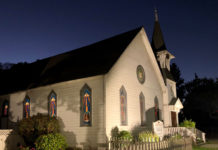Not long ago, I visited the downtown districts in Hollister and
Gilroy. I was shocked to see the high number of empty storefronts
and struggling businesses that bordered the main streets of those
communities. A city’s downtown is its very identity. When a
downtown starts to die, a city’s very heart and soul is in
peril.
Not long ago, I visited the downtown districts in Hollister and Gilroy. I was shocked to see the high number of empty storefronts and struggling businesses that bordered the main streets of those communities. A city’s downtown is its very identity. When a downtown starts to die, a city’s very heart and soul is in peril.
It’s easy to blame the lethargic economy on big-box retail enterprises for the damage done to the historic hearts of those two cities. Those factors have played a part in the demise of our South Valley downtowns – as well as downtowns across America. But I also think there’s a third cause. More than anything else, a pervading sense of apathy by a community toward its central district can, over the decades, bring decay to a downtown.
It doesn’t have to be that way. And I see the city of Morgan Hill taking bold action to preserve its own downtown district by using an urban planning policy called “smart growth.” Morgan Hill is seeking to transform its downtown into a place that will be attractive not only during the 9 to 5 business hours but also in the afterhours. The city wants to encourage the creation of a vibrant community of citizens who will make their homes in this central district and thus provide patronage to the shops and restaurants and coffee houses located within easy walking or biking distance to their downtown residences.
Smart growth is an idea that originated in the 1970s when the energy crisis and environmental movement advanced the idea that suburban sprawl caused many serious problems for cities including traffic congestion, disconnected neighborhoods and the decay of once vibrant downtowns. Smart growth advocates focus on creating a city center that served as a hub for all the neighborhoods in a community by providing a range of convenient transit systems (such as bus and rail options as well as biking and walking paths) and mixed-use development (such as home lofts set over shops and businesses).
The benefits that a smart growth policy can bring to a city are numerous. It can create a vibrant sense of community by enhancing the historic and cultural infrastructure in a city. It can expand the choices for transportation, jobs and housing in a city, thus stimulating a diversity of demographics in a community. It can preserve and even enhance the natural resources and entertainment options of a community, thus stimulating the downtown economy. It can promote public safety by creating a sense of community in which people watch out for each other. And it can promote public health by lessening the pollution that comes from urban sprawl while encouraging citizens to gain from the exercise of walking or biking as they do their daily activities. In short, smart growth raises a city’s quality of life as it invigorates the local economy and conserves our precious environment.
Now I’d like to say something about Measure A, a measure on the ballot for the May 19 election that if passed will serve as a lynchpin for Morgan Hill’s smart growth development of its downtown. The measure intends to amend the city’s general plan and zoning code to provide an exemption in the city’s residential development control system (RDCS) of up to 500 residential units in the downtown area. This will encourage developers to build virtually in one shot homes for more than 1,000 citizens in the downtown district, thus providing a substantial population base stimulating smart growth in the heart of Morgan Hill.
Measure A is a reworking of Measure H which failed to pass by 10 votes in last November’s general election. A lack of good communication was the primary reason why Measure H failed. Some citizens who cast a no vote mistakenly believed that Measure H would raise the population cap of 48,000 in the city limits. Some voters also mistakenly believed that Measure H would bring low-income housing to the downtown. Through workshops and the news media, the proponents of Measure A are working hard to educate voters to the fact that this ballot measure will not change the population cap. It will fill the downtown properties with market rate housing.
Developers and many downtown businesses want Measure A to pass because it will provide investments and a large customer base to the downtown economy. And environmentalists want Measure A to pass because it preserves open space in the South Valley as it reduces urban sprawl.
Measure A is a smart choice for Morgan Hill voters because it stimulates smart growth. If it succeeds, Morgan Hill’s goal of “smart growth” for its downtown’s development can encourage the business and city government leaders of Hollister and Gilroy to also incorporate smart growth policies to revitalize their own downtown districts.







